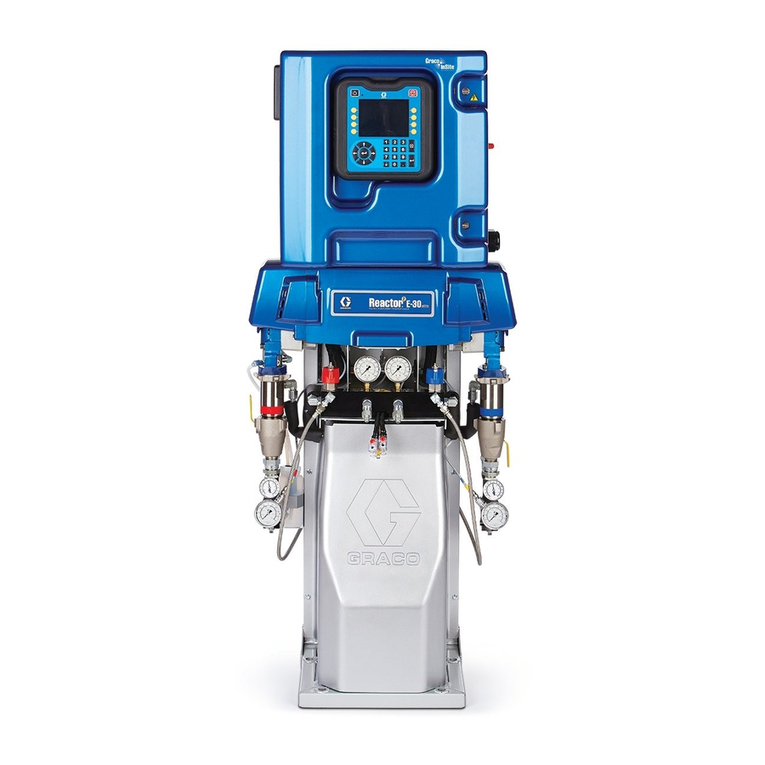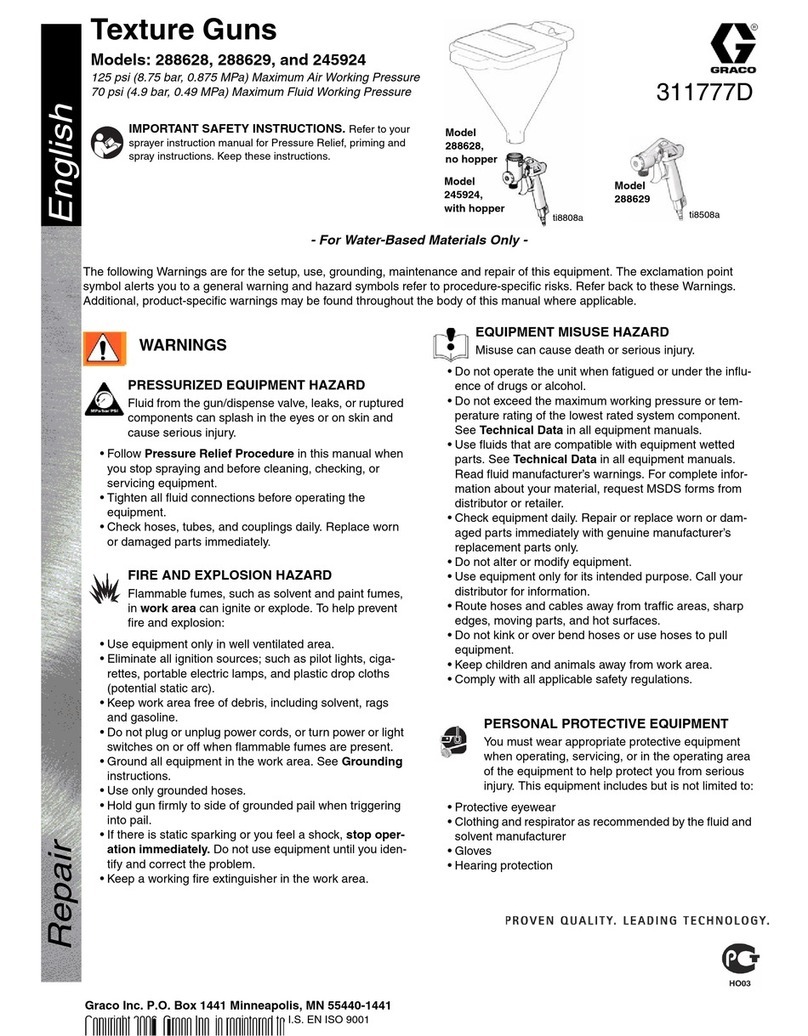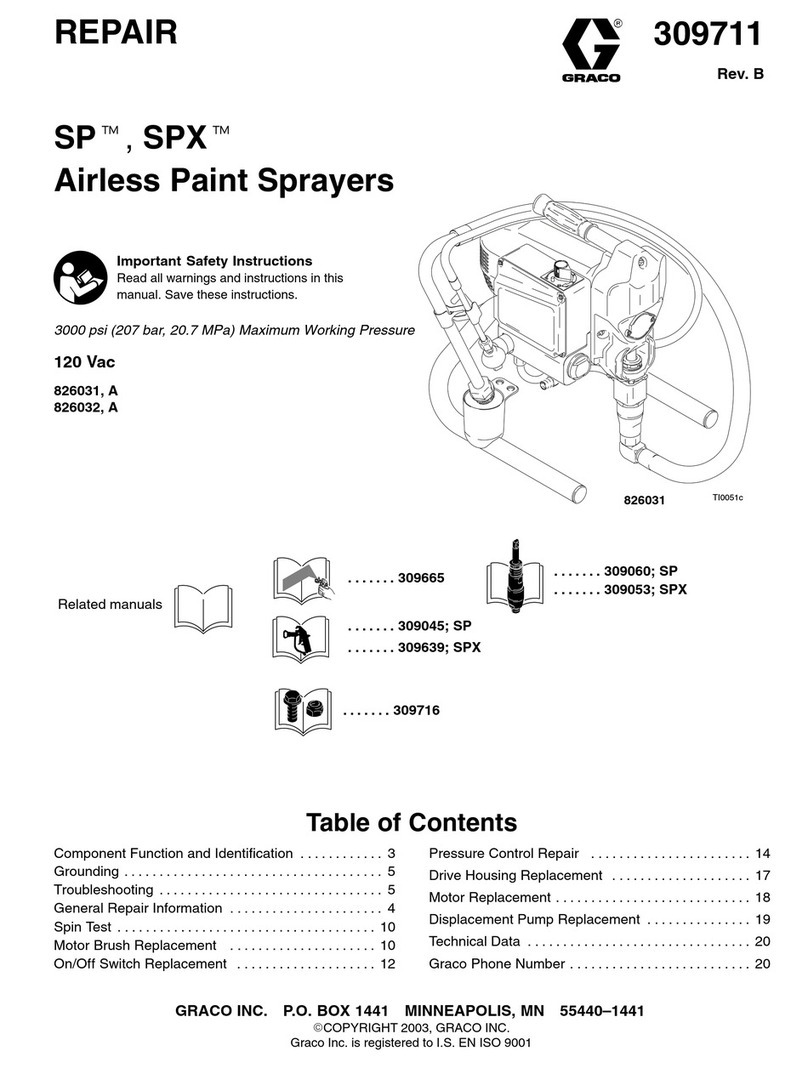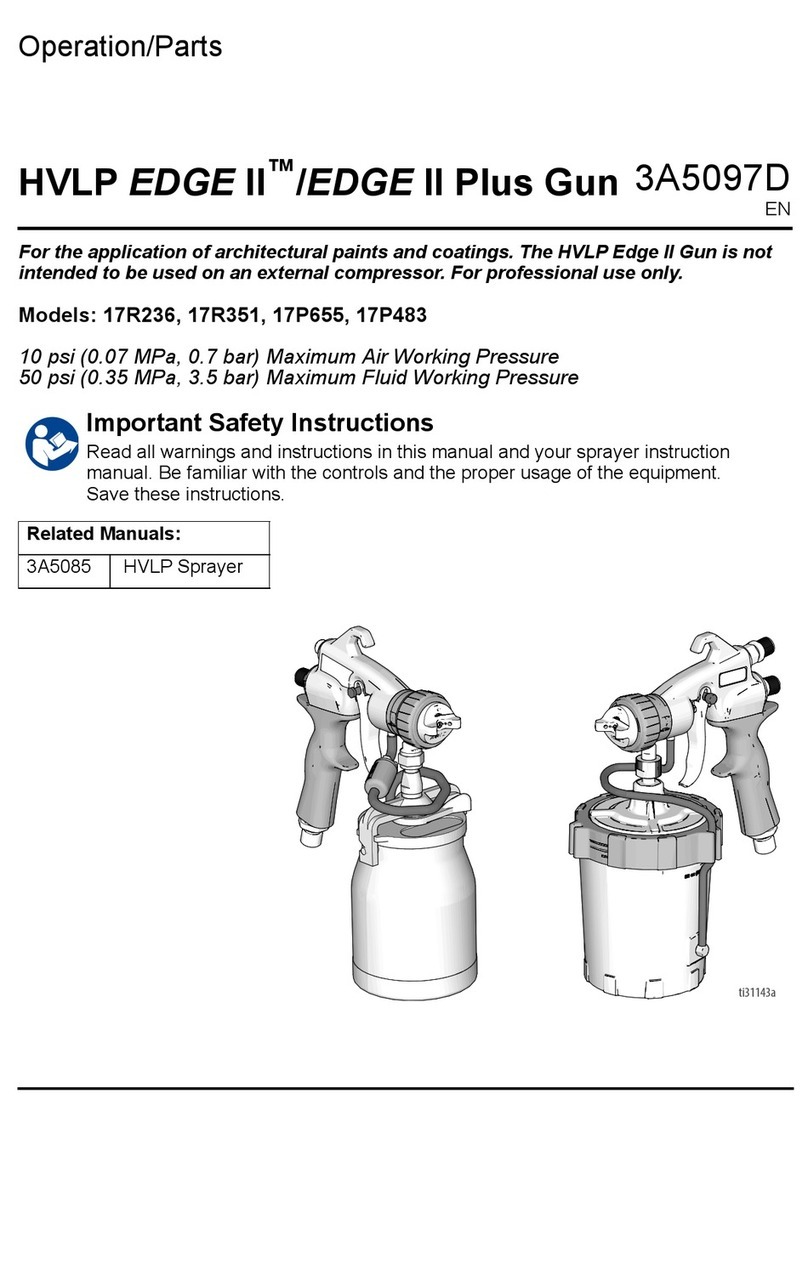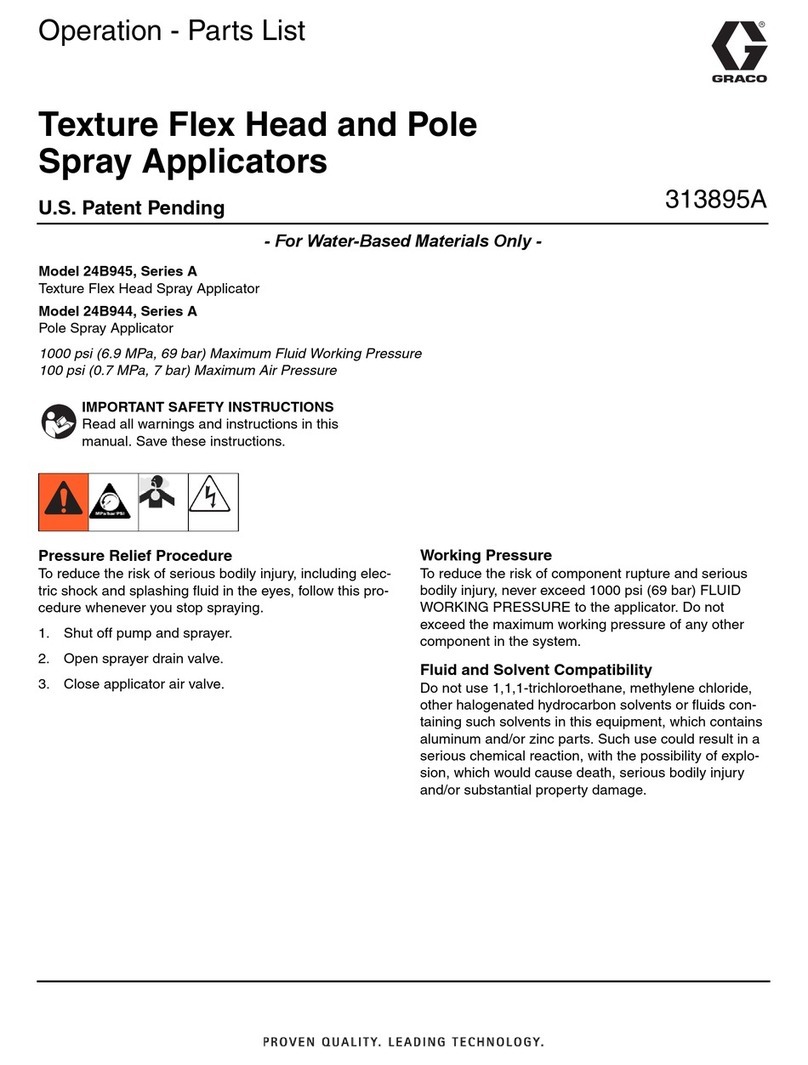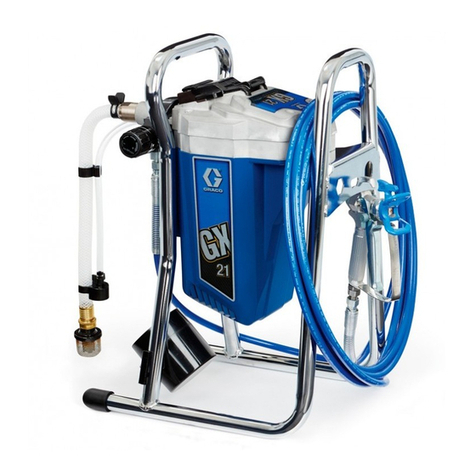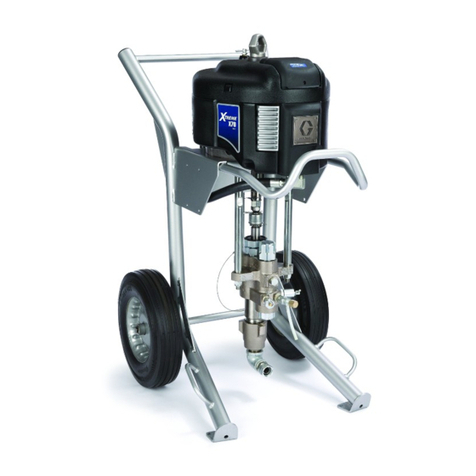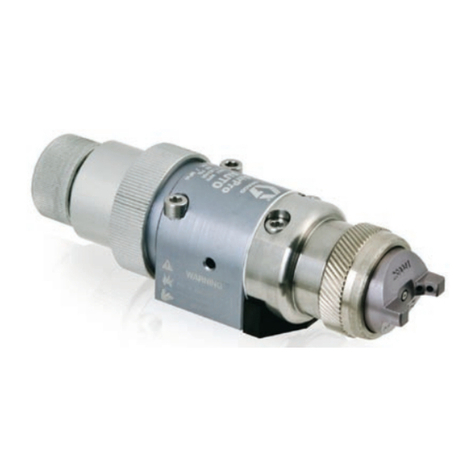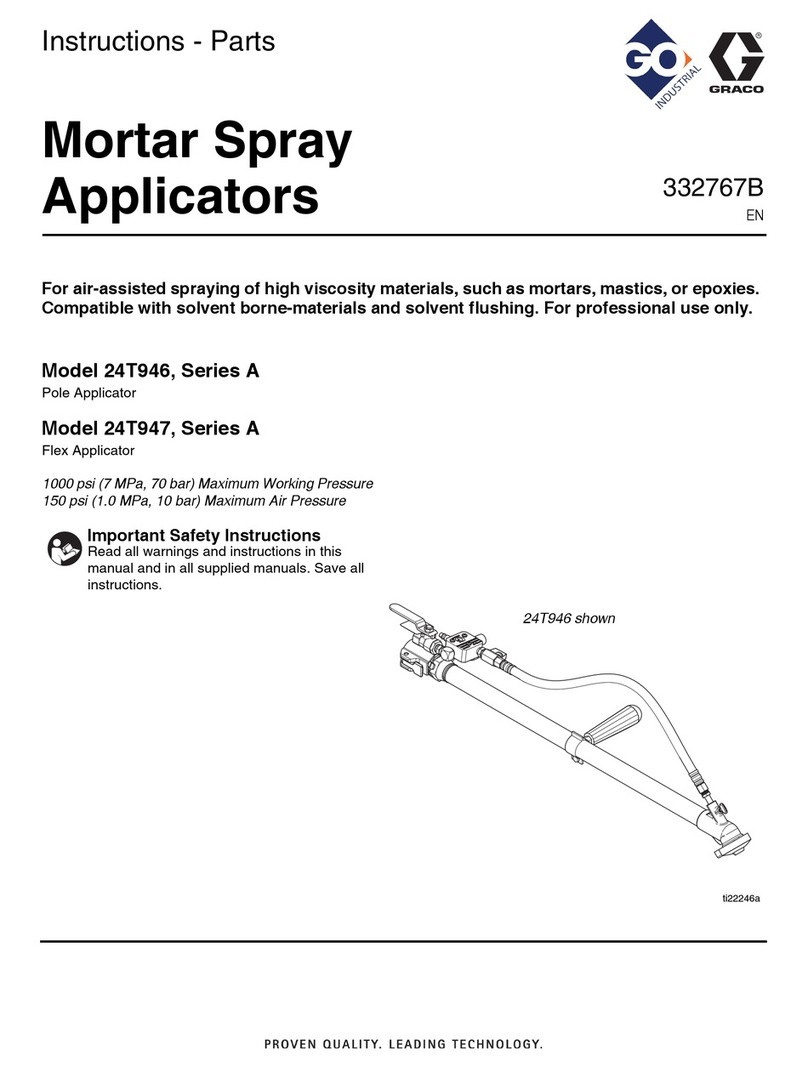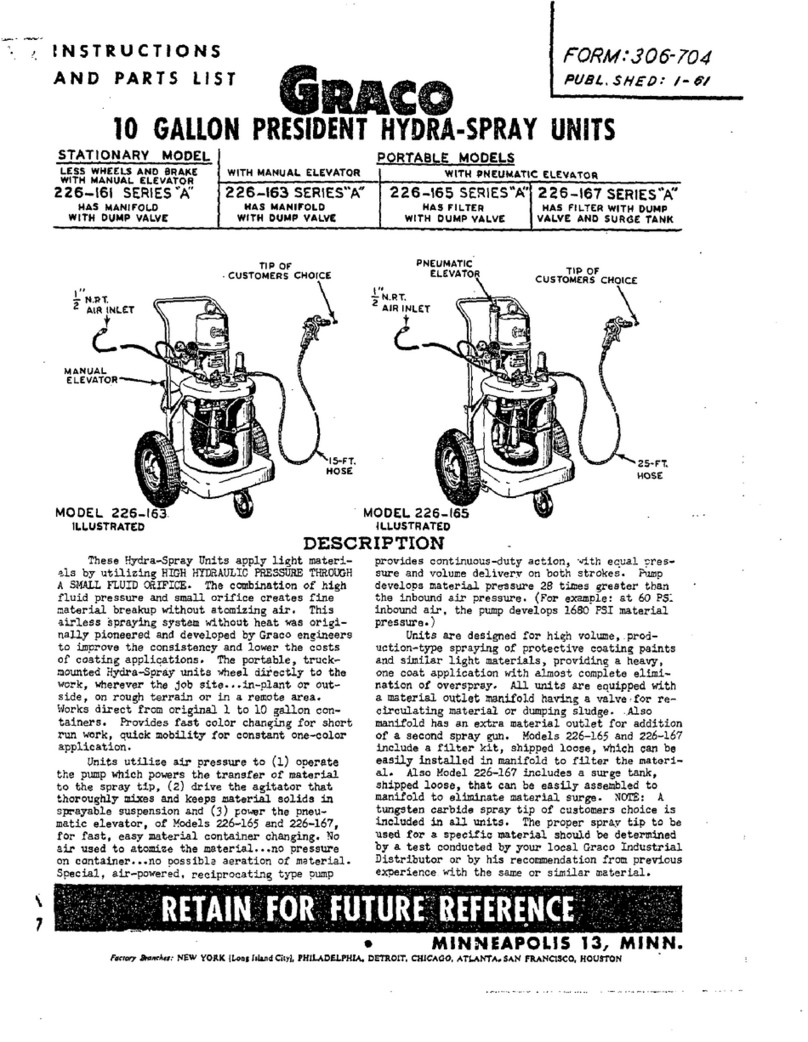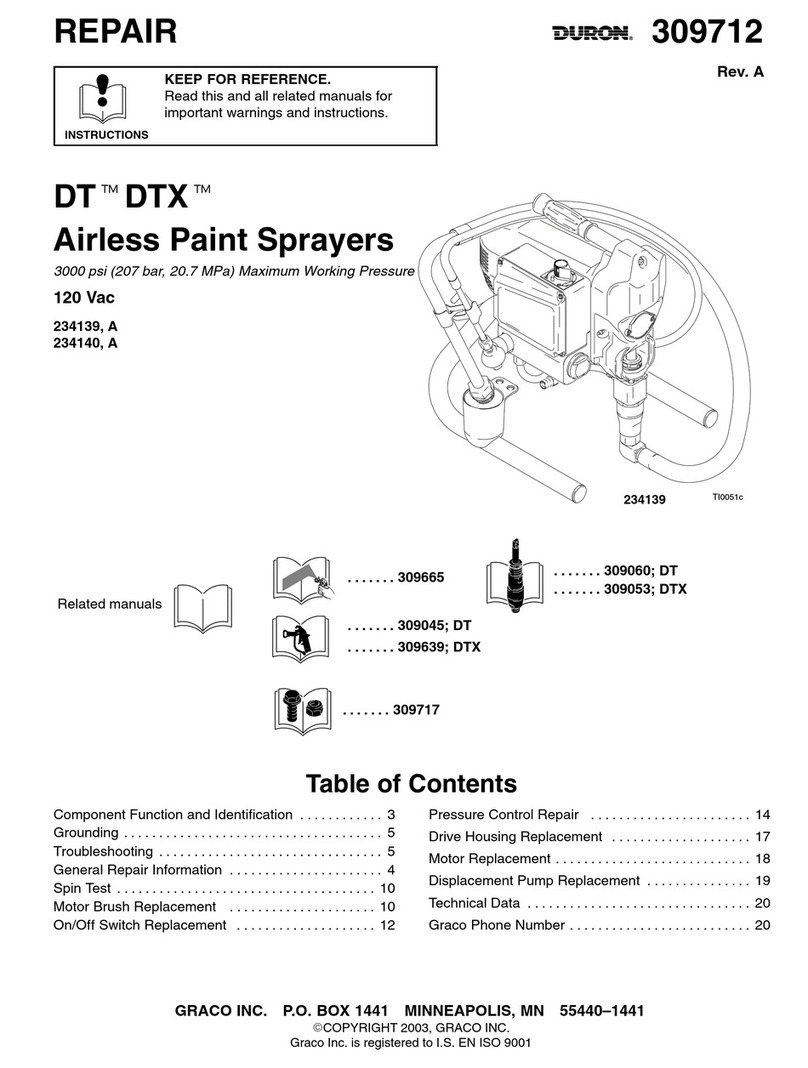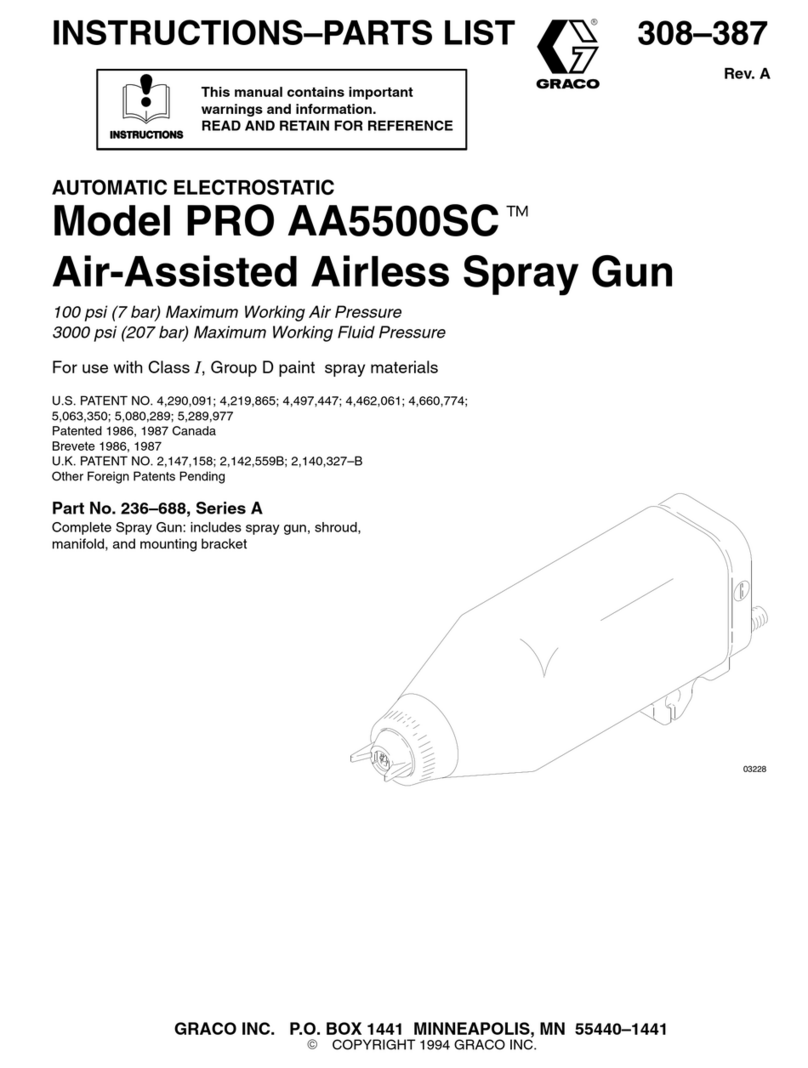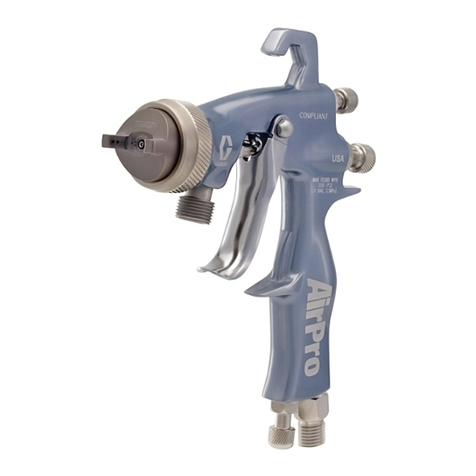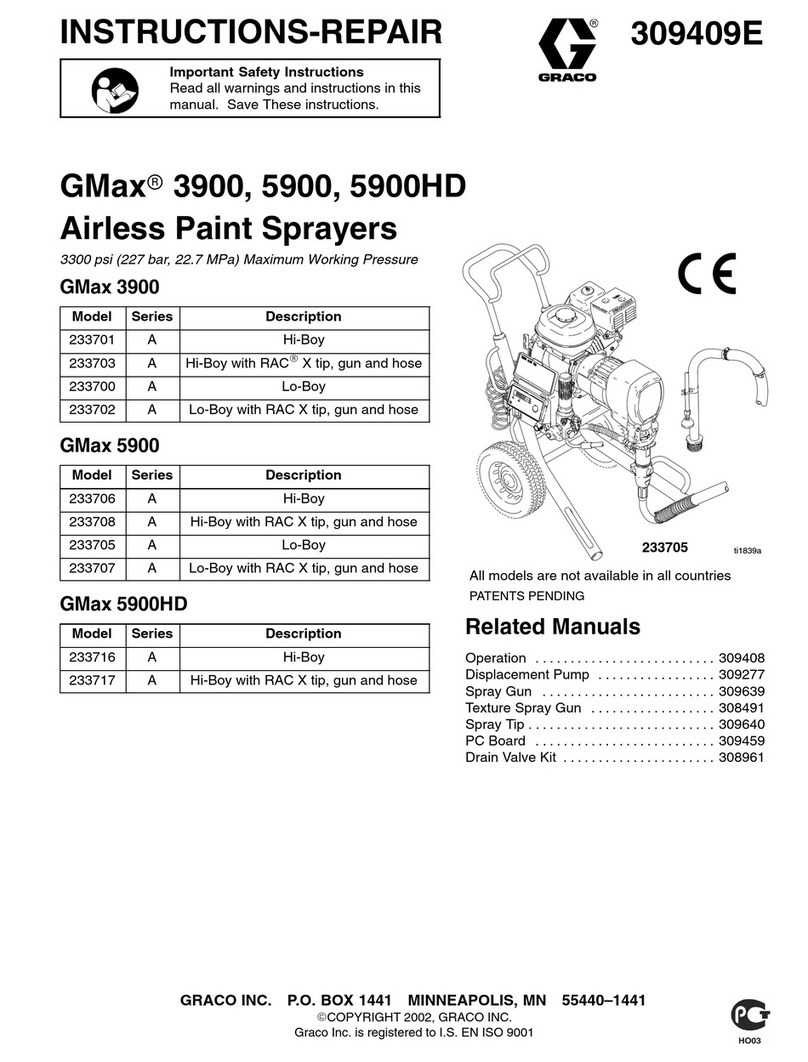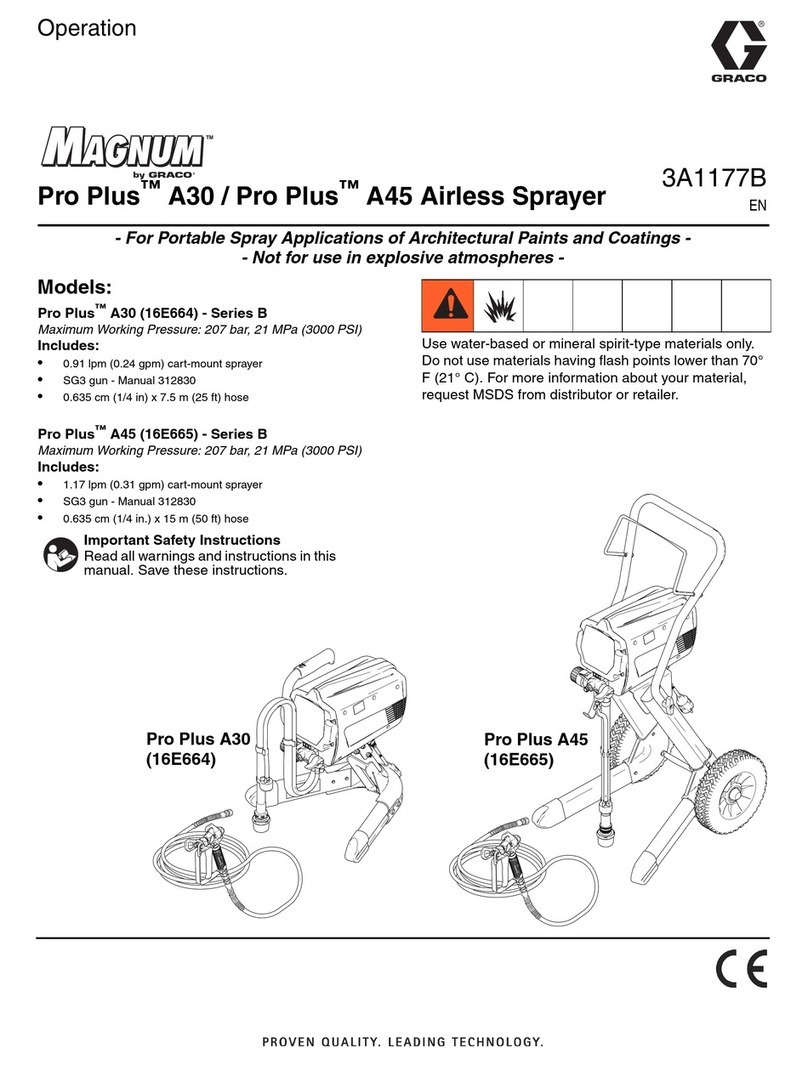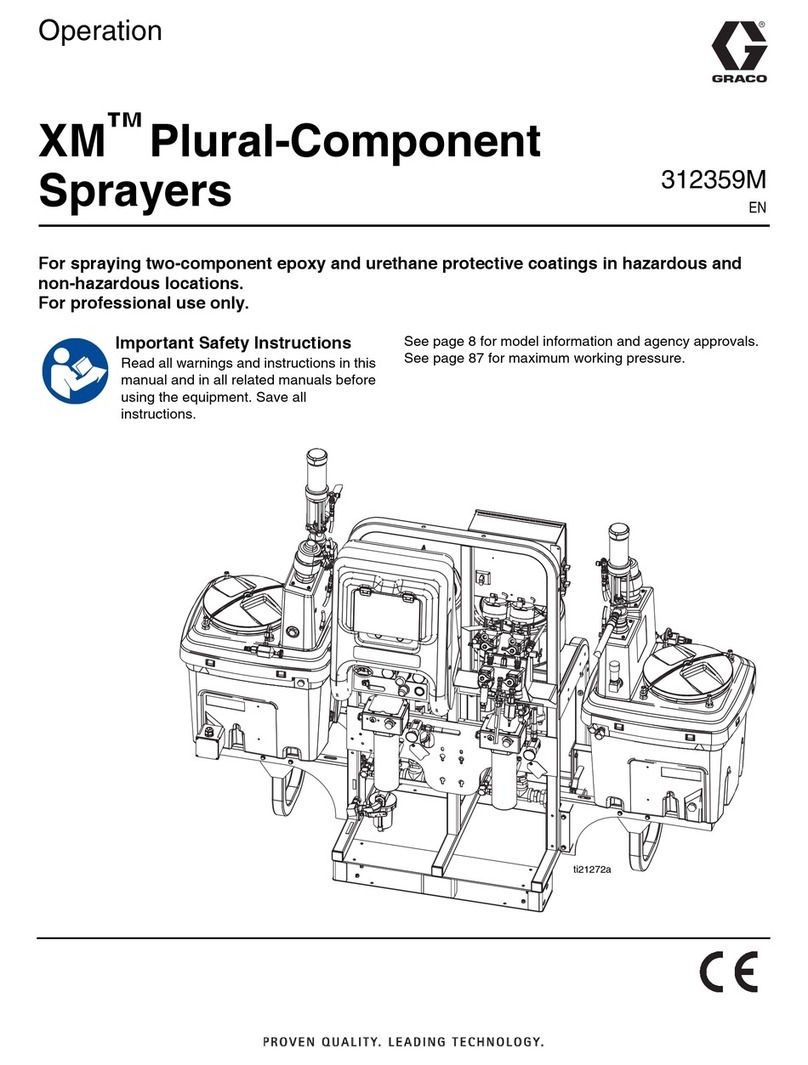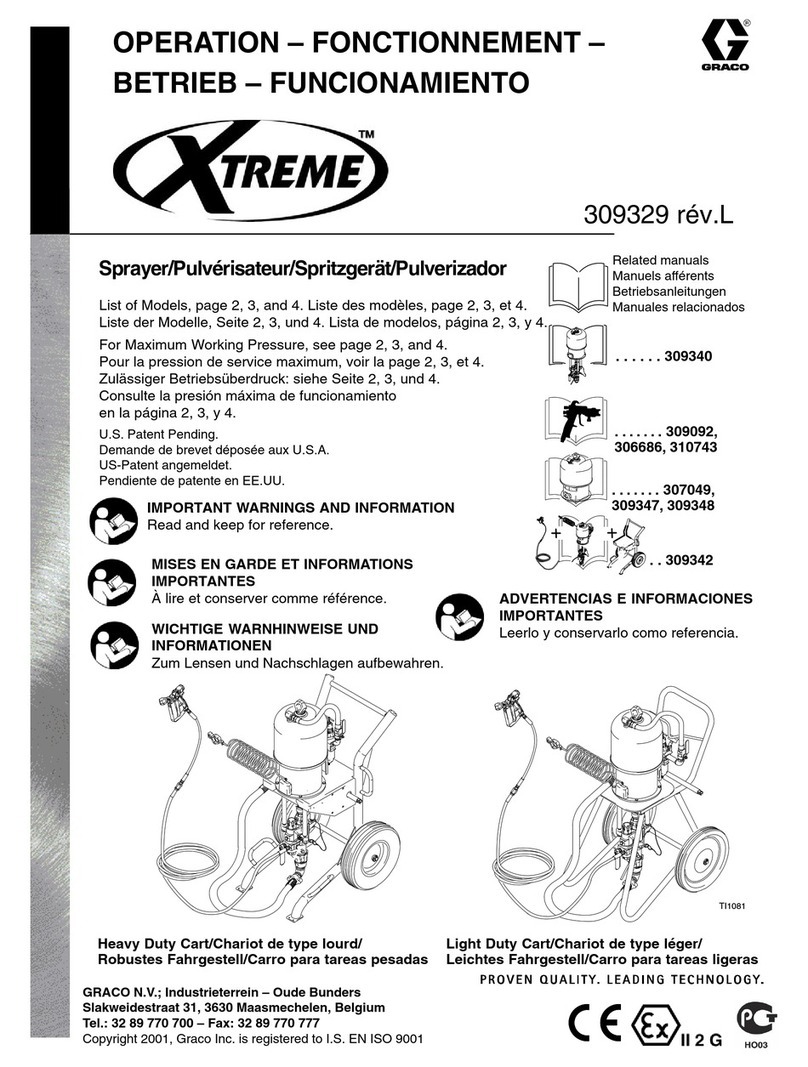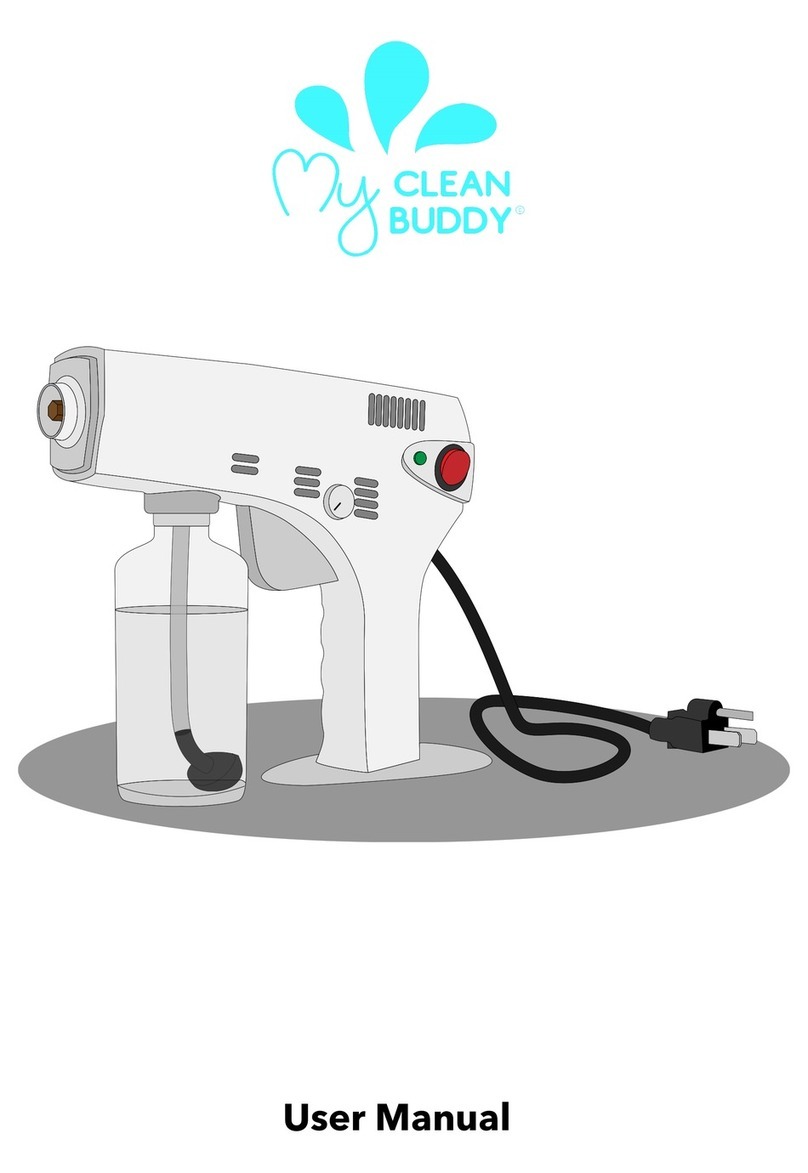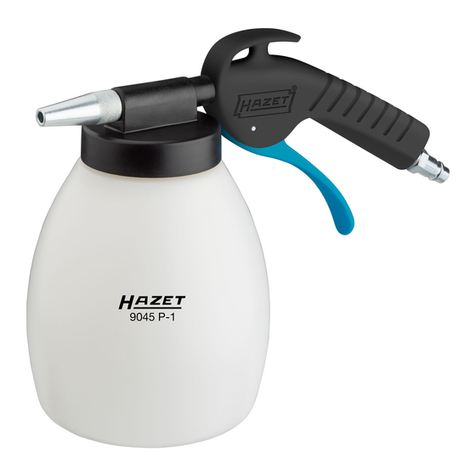~~
HELPFUL
HINTS
Adjusting
The
Flow
Control
findthesettingthat gives you desiredseveral-pass
proper adjustment isvery important. Take the time to
coverage.
Theproper output setting will be slightly different for
each paint that you use. Once you find theproper set-
ting, you can leave
it
there until the job isdone, but
a
changeto a different coloror type of paint may require
readjusting.
To find theproperoutput setting:
Close
the flow control
gradually open the flow control (turn counterclockwise)
(turn theknobclockwise). While painting onpaper,
and watch howthe pattern coverage changes.
Don't turn theknob toofast. When the patternsudden-
setting.
lygets much heavier you havefound theproper output
When painting with latex paint, use the setting found
for proper output only. Turning the knobpast this set-
ting pointmay giveyou
a
ragged or irregularpattern; to
correct this justclose the flow controland readjust.
When painting smaller objects or using oil basepaint,
reduceflow to allow slower movement andbetter con-
trol. Beginthe same way, withthe flow controlclosed.
Adjust to the desire flow.
To
painttrim and narrowedges, close the gateas need-
ed to narrow thepattern. Keep moving
at
the same
speed.
Paintlng Ceilings
To
Daint a ceiling.install the plasticceiling adapter. It
reaches to the bick of the paint cup
so
you can paint
longer before refilling. Remove the splash guard from
the cup. Pour paint into cup to
a
level
1
in.
125.4
mm)
below the projectioninside cup.
See
illustrationbelow.
Point the adapter towards
PAINTMASTER
handle and
push onto riser tubeuntilthe endof thetubejust
touchesthe bottom of theadapter. Don't push
it
on too
tightly.
1
inch
125.4
mml
Painting Walls
A goodway to paint
a
walland avoid extra motion isto
paint
it
in sections about
4
feet high and
4
feet wide.
paint the tophalf
of
wall first, then the bottom half.
Holding
PAINTMASTER
8
to
10
inchesfrom the wall,
When painting theceiling, make sidetoside passes, not
forward
and
back.
Atthewall, turn the
PAINTMASTER
about 90° right or
left,
thenstraightenfor next pass.
This avoidsthe tendencyto tipthe
PAINTMASTER
too
far back.Holdthe
PAINTMASTER as
near the ceiling as
possible.
the
PAINTMASTER
too far forward. Paintthat normally
Be careful near the bottom of the wall to avoid tipping
drains back into cup can run outthe sliding gate open-
the wall avoid tipping backwards
as
disk can pickup
ing when tipped too far forward. Also near the top of
paint and cause spattering.
3.
Start
your stroke, then squeeze the trigger. Having
Make upand down strokes as shown in box
5
on page
the
PAlNTMASTER
in motionwhen squeezingthe trig-
ger avoids puttingexcess paintinone spotand possible
runs or sagging. Also, releasethe trigger just before the
end of the stroke.
Whenpainting outdoors, the
less
wind and sun, the
Painting Outdoors
better. Wind makes
it
hard to control the pattern and
sun can dry the paint too quickly, even causing
a
dry
can carry wet paint where you don't want
it.
The hot
pattern in some cases.
When painting
a
fence, put paper or plasticbehind
it
to
catch excess paint thatmisses the fence.
4
307-376
